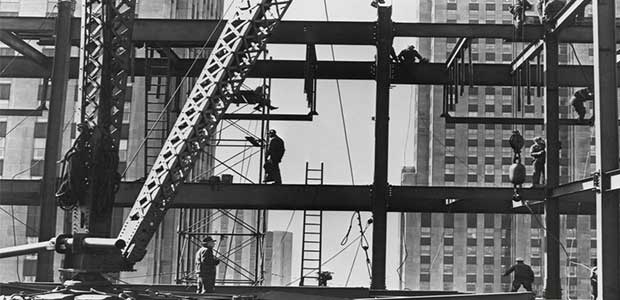
90th Anniversary
Taking Safety to New Heights
There is a long history behind the development of fall protection standards, personal protective equipment and the ways safety professionals keep workers safe at heights.
- By Sydny Shepard
- Mar 01, 2022
I’m sure you’ve seen it before—the photo of the construction workers sitting on an iron beam, having their lunch high above New York City. The photo, aptly named, “Lunch atop the city,” was taken in 1932 and shows 11 construction workers taking a break from building 30 Rockefeller Plaza.
The photo is a time capsule, a snapshot of the past and a reminder of how work used to be done without safety in mind. As you can imagine, back in 1932, there was no Occupational Safety and Health Administration, no Construction Industry Standard to protect workers from heights, no ANSI standards giving construction managers and safety professionals best practices to keep workers safe.
In our special 90th Anniversary coverage this issue, we will take a look at the development of fall protection standards and how PPE has evolved with modern work and technology.
Early Use of Fall Protection
Prior to the formation of OSHA, worker safety was often left to be the responsibility of the worker. It is believed that employers were rarely involved in keeping employees safe outside of posting a sign that warned, “Fall Hazard” or verbally telling workers to be careful. There was one project, however, that found safety to be an integral part of their construction practices.
In the 1930’s the Golden Gate Bridge in San Fransisco began its long process to completion. Joseph Stauss, the chief project engineer on the project, decided to implement safety practices that, at the time, were revolutionary. He required all construction workers to wear hard hats, where respirators when riveting and to tie themselves off with the use of safety belts and tie off lines.
When the risk of falling became eminent three years into the project, Stauss invested $130,000 in a rope-and-mesh safety net that would be suspended under the bridge. The was able to give workers confidence as they performed their duties and prevented many deadly falls over the course of construction—19 men fell into the net and survived.
During the entire project, only 11 men died, 10 of which suffered fatal falls when a five-ton platform collapsed and ripped through the safety net. Even then, two of the men still survived the tragic 220-foot fall into the water.
Developing Fall Protection Standards
This article originally appeared in the March 1, 2022 issue of Occupational Health & Safety.